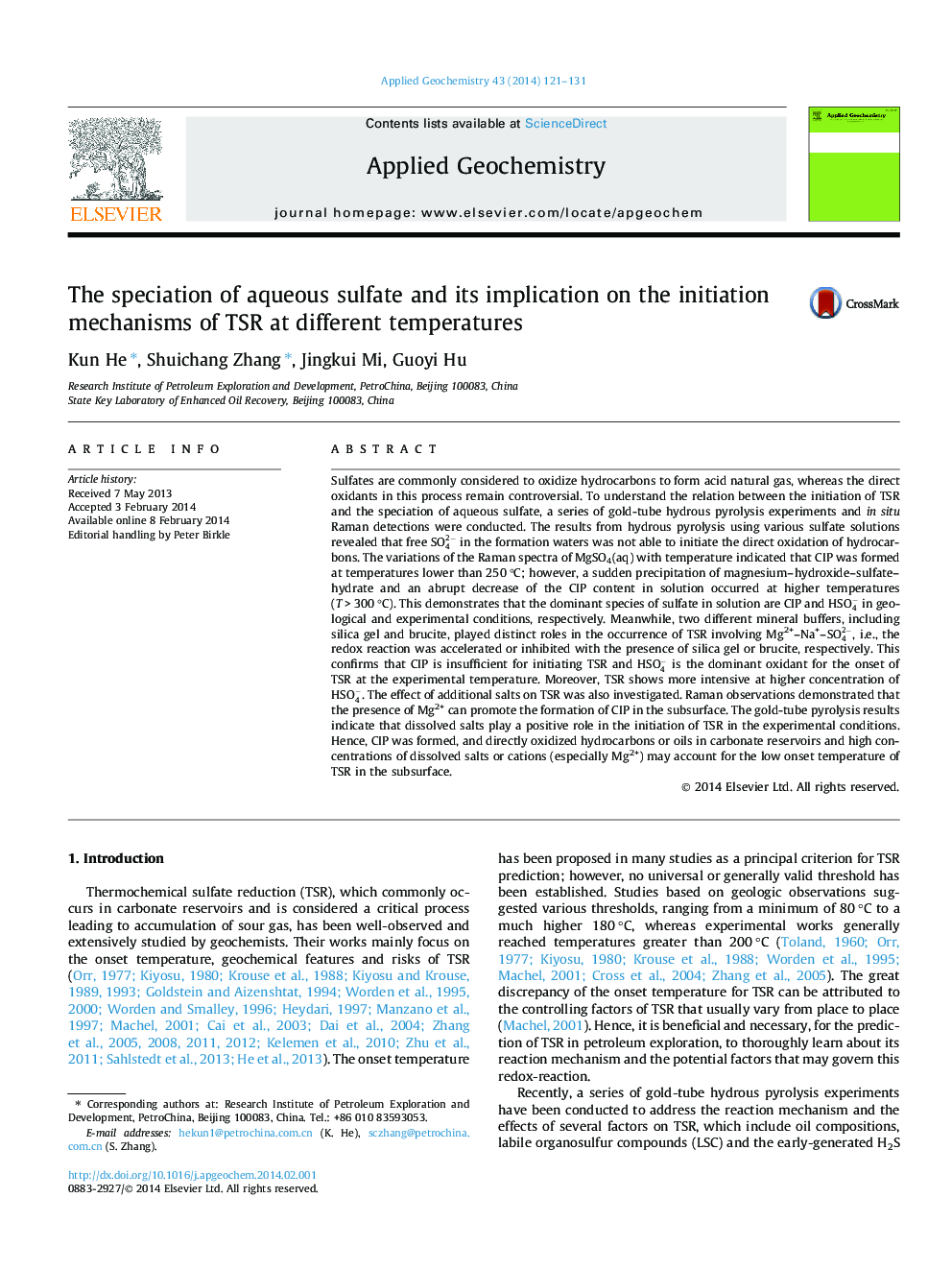| کد مقاله | کد نشریه | سال انتشار | مقاله انگلیسی | نسخه تمام متن |
|---|---|---|---|---|
| 4435825 | 1620248 | 2014 | 11 صفحه PDF | دانلود رایگان |

• An in situ Raman method was developed to address the speciation of aqueous sulfate.
• Gold-tube pyrolysis was also applied to ascertain the reaction mechanism of TSR.
• The feasible oxidant of TSR at geological condition should be CIP.
• The dominant oxidant of TSR at experimental condition is HSO4-.
Sulfates are commonly considered to oxidize hydrocarbons to form acid natural gas, whereas the direct oxidants in this process remain controversial. To understand the relation between the initiation of TSR and the speciation of aqueous sulfate, a series of gold-tube hydrous pyrolysis experiments and in situ Raman detections were conducted. The results from hydrous pyrolysis using various sulfate solutions revealed that free SO42- in the formation waters was not able to initiate the direct oxidation of hydrocarbons. The variations of the Raman spectra of MgSO4(aq) with temperature indicated that CIP was formed at temperatures lower than 250 °C; however, a sudden precipitation of magnesium–hydroxide–sulfate–hydrate and an abrupt decrease of the CIP content in solution occurred at higher temperatures (T > 300 °C). This demonstrates that the dominant species of sulfate in solution are CIP and HSO4- in geological and experimental conditions, respectively. Meanwhile, two different mineral buffers, including silica gel and brucite, played distinct roles in the occurrence of TSR involving Mg2+–Na+–SO42-, i.e., the redox reaction was accelerated or inhibited with the presence of silica gel or brucite, respectively. This confirms that CIP is insufficient for initiating TSR and HSO4- is the dominant oxidant for the onset of TSR at the experimental temperature. Moreover, TSR shows more intensive at higher concentration of HSO4-. The effect of additional salts on TSR was also investigated. Raman observations demonstrated that the presence of Mg2+ can promote the formation of CIP in the subsurface. The gold-tube pyrolysis results indicate that dissolved salts play a positive role in the initiation of TSR in the experimental conditions. Hence, CIP was formed, and directly oxidized hydrocarbons or oils in carbonate reservoirs and high concentrations of dissolved salts or cations (especially Mg2+) may account for the low onset temperature of TSR in the subsurface.
Journal: Applied Geochemistry - Volume 43, April 2014, Pages 121–131